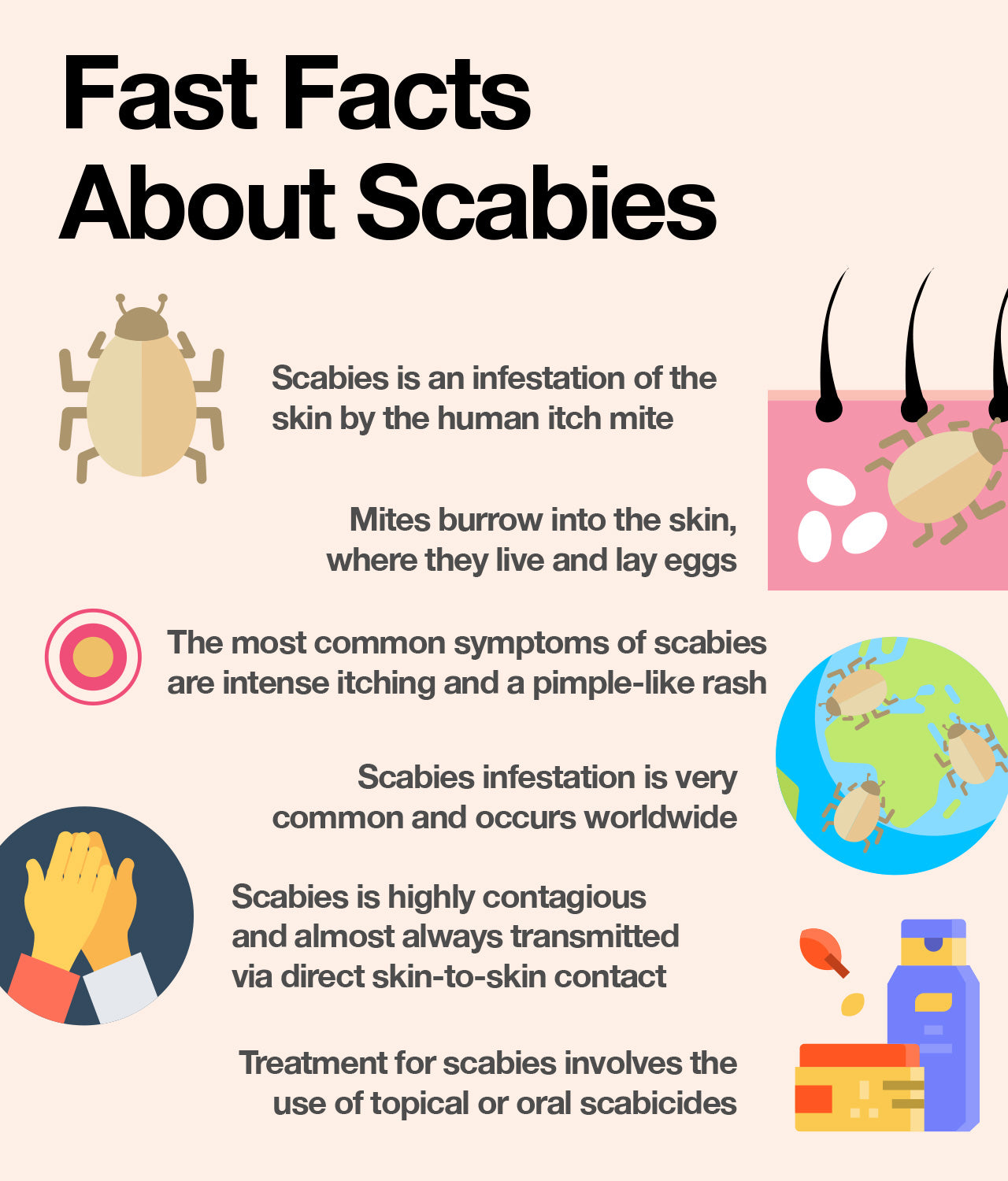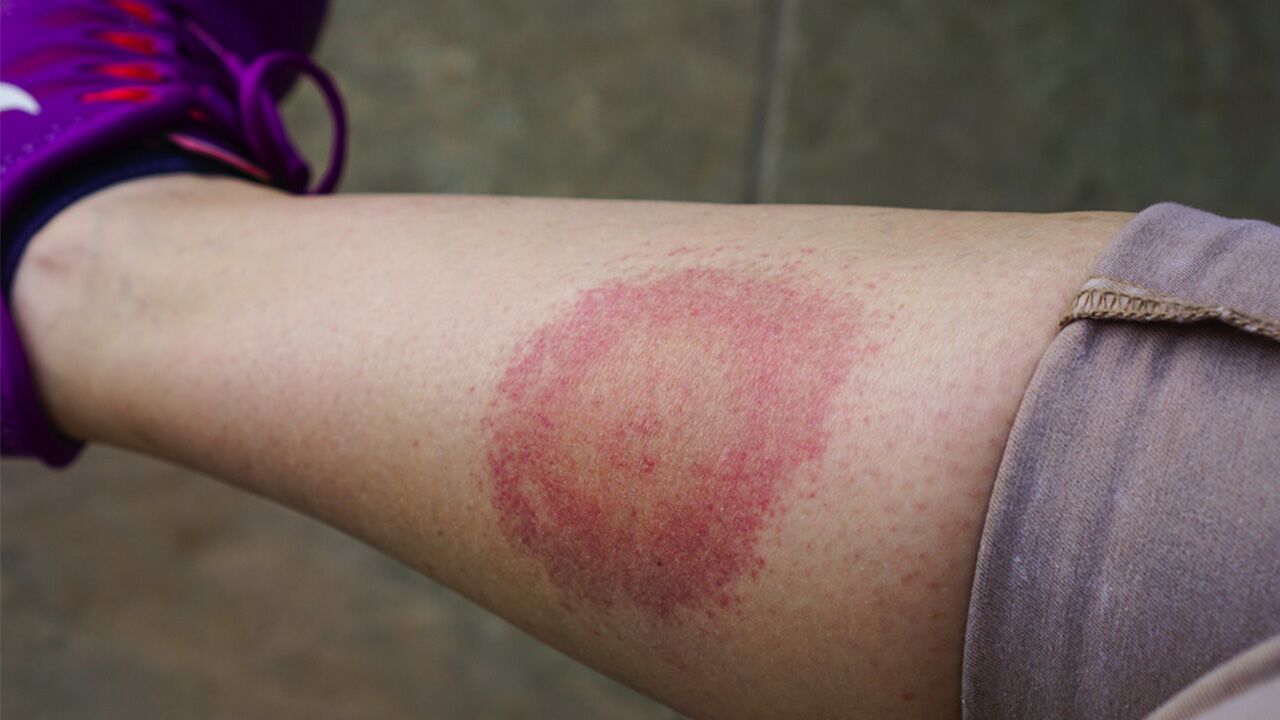How to Treat Scabies: Finding Relief Fast
 By: by Amino Science
By: by Amino Science

Intense itching. Pimple-like skin rash. If this sounds familiar, you may just have a highly contagious skin condition known as scabies. According to the World Health Organization (WHO), scabies affects approximately 300 million people worldwide each year. If you count yourself among them, knowing you’re not alone probably isn’t as important as finding relief. So if you’re ready to discover how to treat scabies and find relief fast, you’ve come to the right place.
What Is Scabies?
Scabies is the result of infestation with the human itch mite, Sarcoptes scabiei. These eight-legged microscopic mites burrow into the epidermis (upper layer) of the skin and lay eggs. When the larvae hatch, they crawl back up to the surface of the skin, where they mature and migrate to other areas of the body (to repeat the process) or find new hosts.
The sites of the body most commonly affected include:
- Breasts
- Shoulder blades
- Armpits
- Waist
- Buttocks
- Genitalia
- Spaces between the fingers
- Folds of the wrists, elbows, and knees
The intense itching that characterizes scabies is the result of the body’s allergic reaction to the mites themselves and to their eggs and feces.
How Do You Get Scabies?
The scabies mite infests human skin without regard to race, sex, age, or socioeconomic status. Because it’s generally spread by prolonged, direct skin-to-skin contact, an infested person is more likely to infect household members and sexual partners. Similarly, outbreaks are frequently seen in crowded institutional settings, such as nursing homes, hospitals, prisons, and child care facilities.
In addition, older adults in nursing homes and those with weakened immune systems are susceptible to a severe form of scabies called Norwegian, or crusted, scabies. Whereas the classic type of scabies may involve only a dozen or so mites, a person with crusted scabies may be infested with millions.
As you might imagine, Norwegian scabies is even more contagious than conventional scabies and can be spread easily by brief physical contact and by contact with contaminated items like bedding, clothing, and furniture.
And in case you’re wondering, the scabies mite that causes mange in animals isn’t the same mite that causes scabies in humans. While it’s possible for a person to develop a temporary skin reaction after coming into contact with an animal with mange, the animal mite is incapable of reproducing on humans and will die in a couple of days.
Symptoms of Scabies
Probably the most common symptom seen with scabies is intense itching. And because the scabies mite is more active at night, this is generally when the itching is at its height. The pimple-like rash that accompanies the infestation will also be punctuated by tiny, thread-like burrows that may be the same color as the skin—which can make them very difficult to see.
Interestingly, people with crusted scabies may not experience the severe itching that occurs with classic forms of the condition. Moreover, the scabies rash seen in people with Norwegian scabies will consist of extensive crusting and scaling.
If an individual has never had scabies before, it may take up to 6 weeks before the immune system’s reaction to the mites leads to symptoms of scabies. However, people who’ve previously had scabies may begin to see symptoms within only a few days.
Without appropriate treatment, scabies can last for months—even years. And persistent scratching can lead to crusted sores or secondary infections due to the introduction of bacteria.
Diagnosing Scabies
To verify the diagnosis of scabies, your health care provider will examine your skin to look for the burrows that are the hallmark of the scabies mite. If a burrow is found, skin scrapings may then be taken for microscopic evaluation to identify the presence of mites, eggs, or feces.
How to Treat Scabies
Treating scabies involves a combination of prescription medication and self-care and preventative measures. The prescription medication of choice is typically 5% permethrin, which is available as a topical cream. Depending on an individual’s age, medical history, and pregnancy status, other drugs may be used as well. These are:
- Crotamiton: While crotamiton is considered safe when used as directed, it does have a history of frequent treatment failure when used for scabies.
- Sulfur: The topical application of sulfur in a base of petrolatum is considered safe for use in young children and is also sometimes used in people who can’t take or don’t respond to other topical medications.
- Lindane: This medication may be toxic if administered improperly or accidentally ingested, so its use is generally recommended only in those who can’t take or don’t respond to other treatments.
- Benzyl benzoate: This medication is sometimes used instead of permethrin but may cause skin irritation in some people.
- Ivermectin: This is the only oral medication currently available for the treatment of scabies, and it’s usually reserved for immunocompromised patients, those with crusted scabies, and those who fail or can’t tolerate other forms of treatment.
To avoid reinfestation, your health care provider will likely recommend that everyone you’ve been in close contact with, including family members, friends, and sexual partners, receive treatment at the same time. With regard to topical treatments, this will involve applying the cream or lotion over the whole body—from the neck down—after a bath and leaving it on for at least 8 hours before washing it off.
Moreover, any clothes, bedding, or towels that were used within 3 days of treatment should be washed in hot, soapy water and dried in a hot dryer or dry-cleaned. Furniture and carpeting should be vacuumed as well and the vacuum bags thrown away. And anything that can’t be washed should be sealed in plastic bags for at least 3 days to starve any surviving mites by depriving them of their food source.
Because prescription medications work quickly, an individual loses the ability to spread scabies mites to others within 24 hours of treatment. However, itching may continue for several weeks as the layers of skin that contain the dead mites, eggs, and feces grow out.
Although one treatment is usually enough to successfully treat most cases of scabies, reinfestations may require a second treatment if symptoms continue for more than a few weeks or new burrows appear. People suffering from Norwegian scabies will require more intensive treatment as well.

Supportive Treatment
Because the itchy skin that comes with scabies can last for weeks, it may be prudent to augment your scabies treatment with a few simple but effective home remedies that can help see you through the worst of it.
- Skin cooling: Taking a cool bath or applying a wet washcloth to affected areas may help decrease itching.
- Calamine lotion: This commonly used over-the-counter treatment for poison ivy can help relieve the itching associated with scabies as well.
- Antihistamines: The use of over-the-counter antihistamines like diphenhydramine may help calm the skin’s reaction to the scabies mites. Natural alternatives such as quercetin and vitamin C may be helpful as well.
Interestingly, some over-the-counter treatments have shown promise in eradicating the Sarcoptes scabiei mite, which may be especially meaningful, as some strains of scabies mites have begun to develop resistance to commonly used scabicides, including permethrin and ivermectin.
A 2016 review found that tea tree oil has antipruritic, antibacterial, anti-inflammatory, and antiparasitic properties and has shown the ability to kill scabies in vitro. Tea tree oil has also been used successfully as an adjuvant topical medication in the treatment of crusted scabies—including cases that didn’t respond to standard therapy.
A 2014 study showed that neem oil can effectively interfere with the energy metabolism of Sarcoptes scabiei var cuniculi—a variety of scabies mite that affects rabbits—thus causing it to die.
Furthermore, a study from 2008 found that a shampoo containing neem oil was able to eradicate scabies infestation in 80% of treated dogs—and almost completely eradicate it in the remaining 20%—all without side effects.
Finally, a 2009 study demonstrated that aloe vera gel was as effective as benzyl benzoate in the treatment of scabies.
To accelerate recovery from this illness and subdue scabies inflammation, consider taking a clinically proven essential amino acid supplement.
Anyone who’s ever dealt with scabies knows what an unpleasant experience it can be. However, effective treatments are available. So if you or someone you care about has symptoms suggestive of scabies, speak with your health care provider right away. The sooner the condition is treated, the sooner you can get back to being you.


Up to 25% off Amino
Shop NowTAGS: conditions
Join the Community
Comments (0)
Most Craveable Recipes




 833-264-6620
833-264-6620



















